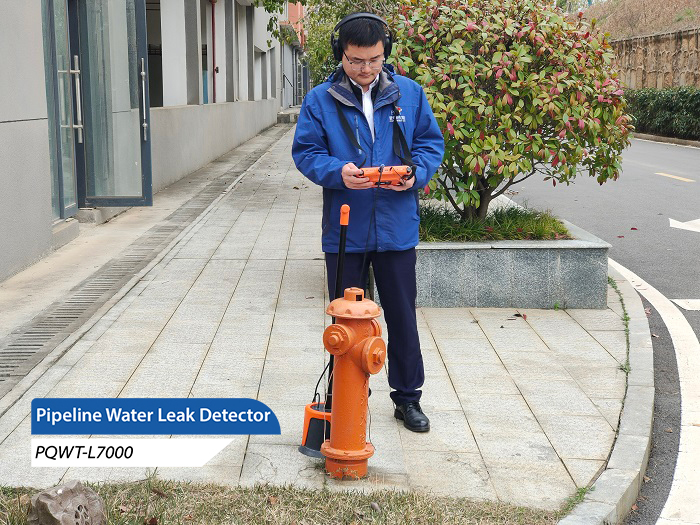In China's urban infrastructure construction, fire pipeline network as an important part of public safety, its importance is self-evident. However, in the actual operation process, fire pipelines often face various problems, the most prominent of which is the phenomenon of pipeline leakage. This not only wastes valuable water resources, but also may pose a potential threat to urban infrastructure. In this paper, we will discuss the main causes of water leakage in fire pipelines and introduce advanced pipeline leakage detection technology.

Analysis of water leakage causes
Natural aging and material corrosion
Firefighting pipelines are mostly steel pipes buried in the ground for a long time, and with the growth of the service life, the environmental factors inside and outside the pipeline work together to cause the pipeline material to gradually aging and rusting. The result of this natural aging is that the wall of the pipe becomes thinner and even perforated, thus forming hidden leaks. Steel pipes, in particular, are more susceptible to oxidative corrosion in wet underground environments.
PE pipe connection problems
In recent years, with the application of new materials, some fire protection pipe networks have started to use PE (polyethylene) pipes.PE pipes have become one of the alternatives to traditional steel pipes with their good corrosion resistance and flexibility. However, PE pipe has very high requirements for installation process, especially in the pipe connection, if the welding or heat fusion joining technology is not in place, it is very easy to produce tiny cracks here, which will develop into water leakage points.
External factors
In addition to the problems of the material itself, changes in geological conditions, external corrosion and a sudden increase in external pressure are also important causes of fire pipe leakage. For example, in earthquake-prone areas, geological activities may lead to unstable pipeline foundations, which may result in uneven pipeline stress and trigger fractures; or in saline or industrially contaminated areas, chemical substances in the soil may accelerate external pipeline corrosion; and in places close to roads or construction sites, vibrations or direct pressure exerted by heavy machinery operations may likewise cause damage to the pipeline structure.
Advanced Pipeline Leak Detection Technology
In order to effectively address these issues, a device called the “pipeline leak detector” is widely used in modern fire protection pipeline maintenance. This device is based on acoustic leak detection technology and is able to quickly and accurately locate leaks in the pipeline network.
Principle of acoustic leak detection
When a fire fighting pipe is in working condition, it is filled with water at a certain pressure. Once a break occurs somewhere in the pipe, due to the pressure difference between the inside and outside, the water will quickly flow out of the rupture and generate sound waves in the process. These sound waves travel along the pipe and spread outward through the soil. By placing a receiver on the ground to capture these acoustic signals, the exact location of the leak can be determined.
Segmented Detection Method
Segmented detection is a practical and economical method for fire protection pipe network systems with complex structures and wide coverage. Specific operational steps include: first find and close the valves between the sections of piping, the entire system is divided into a number of independent parts; and then each section of the acoustic wave detection in turn, until the leak is locked. Although this method is time-consuming compared to the use of specialized instruments, its low-cost advantage makes it still occupy a place in the practical application.
In summary, the causes of fire pipe leakage are diverse and complex, and need to be prevented from material selection, construction quality control and other aspects. At the same time, with the help of efficient detection technology and reasonable maintenance strategy, it can significantly improve the efficiency of problem discovery and treatment, and guarantee the effective operation of urban fire safety system.








